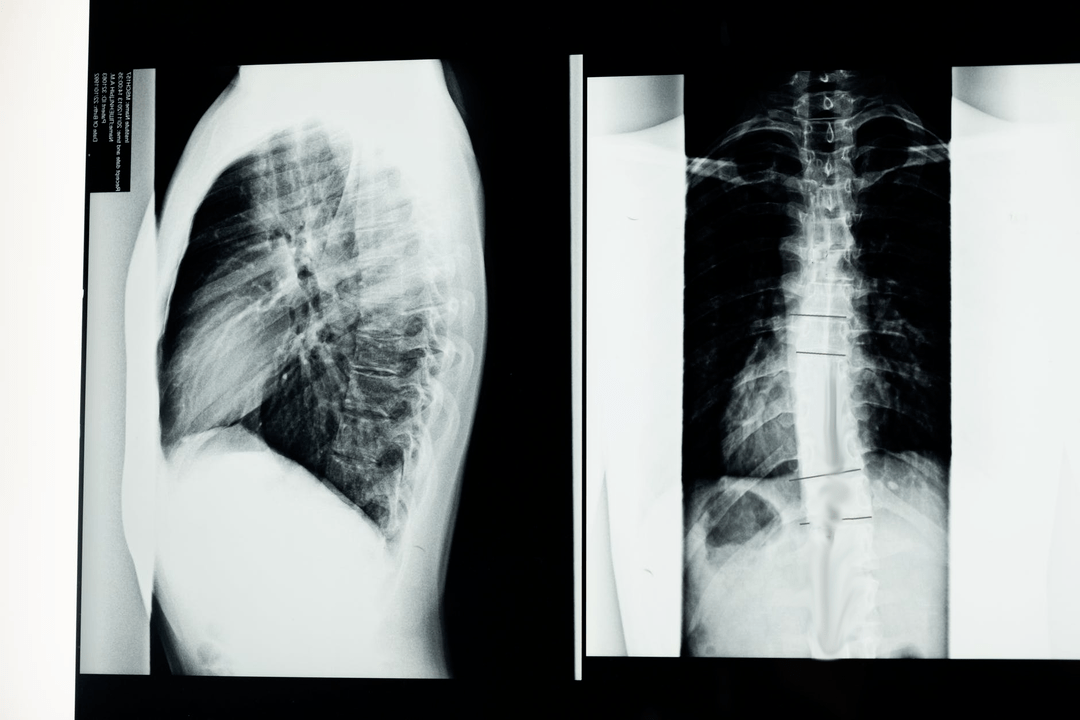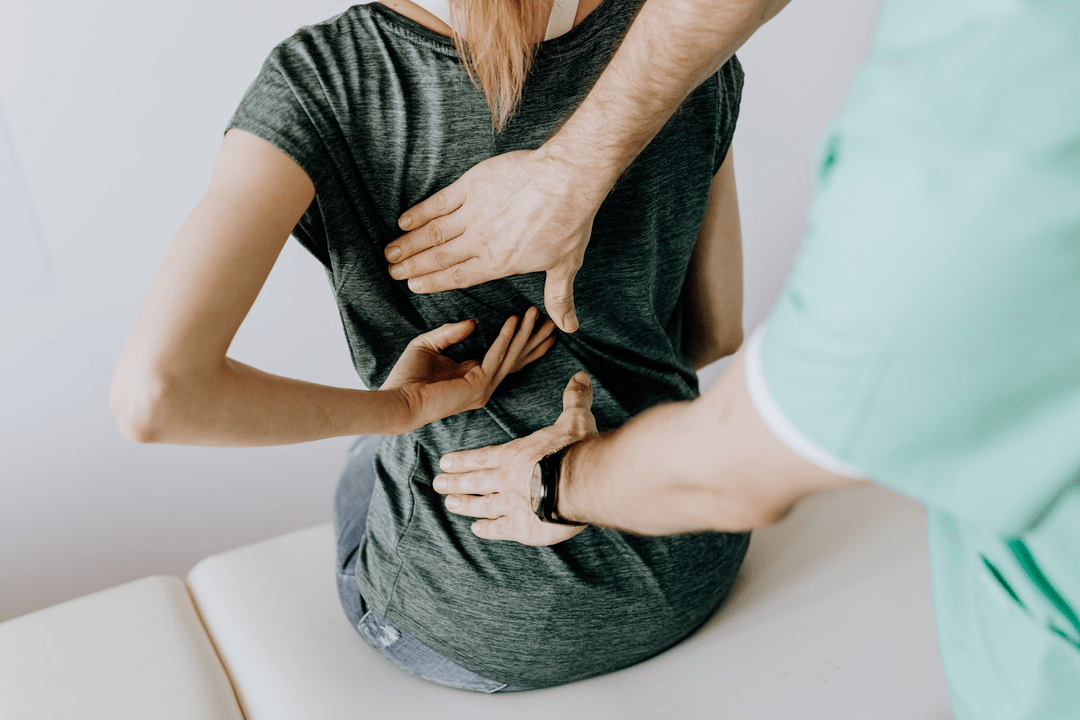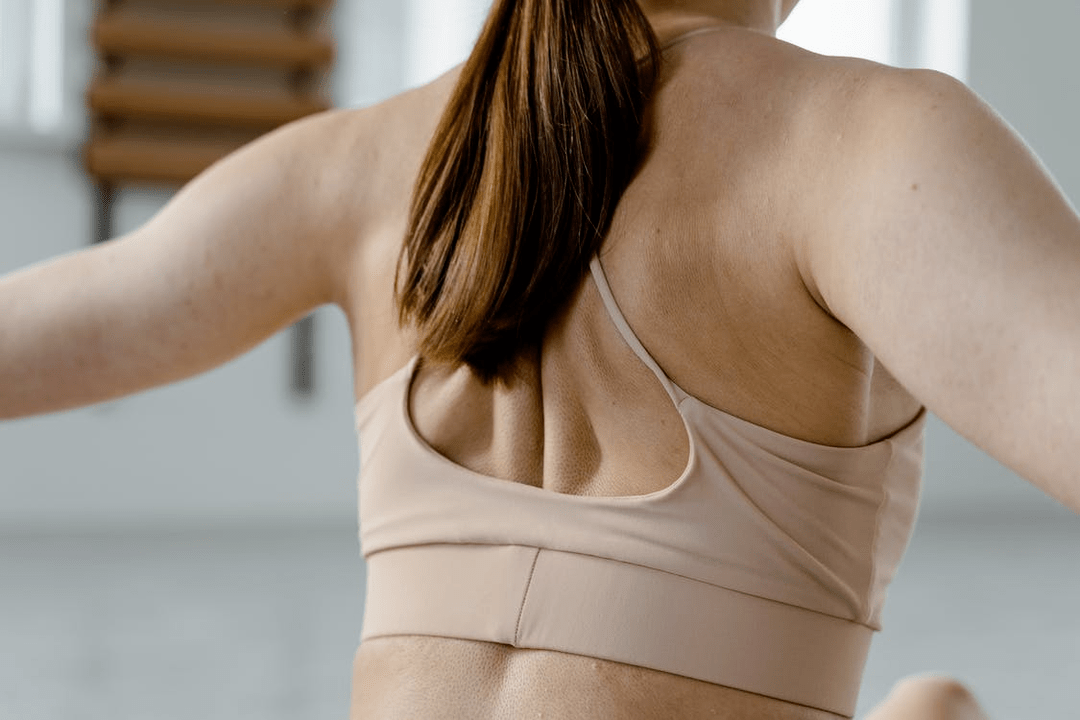osteochondrosisis a world-wide disease as it affects people across the globe (40-90%).Most often, this pathology occurs in mature people after the age of 30 years.Back pain in everyday life is often attributed to this disease.In our article, we will learn more about the symptoms of osteochondrosis, find out the causes and how to treat it.Medically, this disease is known as degenerative dystrophic spinal tissue disease.Osteochondrosis is associated with lesions of the intervertebral discs, articular surfaces, vertebral bodies, and ligaments.Typically, osteochondrosis affects the bones and ligaments first.
There are several stages in the development of osteochondrosis.Let's look at them in more detail:
- Early stages of osteochondrosis look like dehydration of the nucleus pulposus, causing the vertebrae to drop into position.To make it clearer for readers, let us explain what the nucleus pulposus is.This medical term refers to the interior of the intervertebral disc, represented by semifluid (connective tissue fibers) and gel-like (chondroitin) components.During this time, the patient's annulus fibrosus may develop cracks.
- The next stage is closely related to the previous one: ligaments and muscles droop due to prolapse of the vertebrae.This condition causes imbalance in the movement of the vertebrae.This period is characterized by spondylolisthesis, or simply, the displacement of the vertebrae.
- The third stage of the development of osteochondrosis is characterized by manifestations that are more noticeable to ordinary people - herniation of the intervertebral disc (herniation of its contents) and arthropathy.
- The final stages of osteochondrosis are associated with osteophytes.Our body notices the "loosening" of the vertebrae and attempts to return the spine to its original function: support and protection.To achieve this, bony growths called osteophytes appear on the surface of the vertebrae.During the same period, fibrous tissue grows.The result of these processes is that the moving parts of the spine become trapped in the shell.
Osteochondrosis is a multispecies disease.There are osteochondrosis of the cervical spine, thoracic spine, and lumbosacral region, as well as common osteochondrosis.Osteochondrosis of the knee has become increasingly common in medical practice.
Causes of osteochondrosis
There are many reasons why this disorder occurs, but it's not always easy to pinpoint.Today, a sedentary lifestyle, being overweight, bad habits (especially smoking), poor diet, flat feet, strenuous physical activity and poor posture make people more susceptible to osteochondrosis.Spinal injury can lead to the appearance of osteochondrosis, and it may also develop through a genetic predisposition.Metabolic disorders, infections, congenital anomalies, and age-related changes are common causes of this disease.An interesting fact is the link between the development of osteochondrosis and vibration.This is directly relevant to agricultural machinery drivers or machine operators.
Today there is no strict age limit for osteochondrosis – it occurs in both older and younger adults.There is a belief that the development of osteochondrosis is related to salt deposition, but this is not entirely fair.Salt deposits are more likely the result of osteochondrosis.The cause of pain caused by osteochondrosis is often irritation to the nerve roots, which is medically called irritation.Vascular disease in the context of osteochondrosis occurs due to impaired innervation of the vasomotor system.
Symptoms of osteochondrosis

The most obvious symptoms of osteochondrosis are pain and discomfort.The pain is not always constant; it may periodically worsen and then subside.These symptoms are often accompanied by numbness in the limbs.In most cases, the pain radiates to the left side of the body.If you find that you have symptoms of this disease, rush to see a specialist - a therapist or neurologist.Early detection of osteochondrosis will improve the effectiveness of its treatment.
Patients with osteochondrosis often complain of increased fatigue.An interesting feature is the coldness of the extremities, and it is not clear at first glance how this is related to the disease.Osteochondrosis is often accompanied by headaches and dizziness.A characteristic feature of the disease is high eye fatigue and even decreased vision.People with lumbosacral osteochondrosis may develop reproductive problems.It is important for women to know that osteochondrosis can interfere with the normal course of pregnancy and conception itself.Each type of osteochondrosis has its own unique symptoms.Therefore, with cervical spondylosis, the following symptoms can be observed: headache (especially when moving the head), dizziness when turning the head, impaired sensitivity of the affected area, pain in the neck, shoulder blades, arms and chest.An interesting but less pleasant symptom of cervical osteochondrosis is impaired tongue mobility.Thoracic osteochondrosis is rare and is characterized by chest pain, especially when breathing.The pain can radiate to the stomach, heart, and liver.Another characteristic of this type is numbness, which occurs only in the chest area.With lumbosacral lesions, patients often complain of pain radiating into the legs.Another symptom of this type of osteochondrosis is paralysis of the lower limbs.
How to Diagnose Osteochondrosis

Before starting diagnostic studies, the neurologist takes the patient's medical history and carefully studies his complaints.Osteochondrosis shares symptoms with a number of other diseases, so it is important to be able to differentiate between the pathologies.X-ray studies will help confirm the diagnosis of osteochondrosis: radiography, myelography, and computed tomography.
X-rays allow you to obtain X-ray images of your spine or a part of it.This way, doctors can pinpoint the locations affected by the disease.For the sake of clarity, we will explain how osteochondrosis is determined by X-ray: the image will show narrowing of the disc, the presence of bone growth (osteophytes) or changes in the shape of the spinal segments.
Myelography is more complex than radiography.This is due to something doctors must do during a myelogram: inject contrast fluid into the spinal canal.This can pose dangers to the patient: firstly, there may be an allergic reaction to the injected substance, and secondly, if the puncture is unsuccessful, the spinal cord may be damaged.Nonetheless, a properly performed myelogram allows experts to view the internal structures of the spinal canal.This method is particularly important in diagnosing spinal hernias.
CT (computed tomography) and MRI (magnetic resonance imaging) are the most effective and modern methods of distinguishing osteochondrosis from spinal disorders with similar symptoms.
Treatment of osteochondrosis

Treatment of osteochondrosis is comprehensive.The therapy aims to eliminate the main symptoms and causes of the disease.To combat osteochondrosis, doctors use acupuncture, vacuum therapy, manual therapy, laser therapy, traction, electrical stimulation, medications and magnetic aspiration.The main task in obtaining effective treatment is to detect the disease in time.The main question for people facing this serious disease is: Is it possible to cure osteochondrosis?The answer depends on the form and extent of osteochondrosis.If you treat the disease from the first stages, you can get rid of osteochondrosis forever.
To treat osteochondrosis, doctors use medications and non-drug methods.Among the drugs used to treat osteochondrosis, it is worth highlighting:
- NSAIDs.They help eliminate pain and inflammation.NSAIDs are available topically in the form of ointments and gels.
- Novocaine blockers.They cope with pain effectively.
- Steroid drugs.They are prescribed as epidural injections and intramuscular injections.
- Muscle relaxants.These therapies can help patients combat muscle spasms.
- Vitamins B1, B6 and B12.They will help improve metabolic processes required for spinal health.
Examples of nonpharmacological treatments are varied, interesting, and enjoyable.The following will help you manage the manifestations of osteochondrosis without the use of medications:
- exercise therapy;
- physiotherapy;
- massage;
- manual therapy;
- traction;
- Reflexology.
Let's look at these treatments in more detail.Physical therapy for osteochondrosis involves selecting physical exercises to eliminate nerve root compression, correct posture, and strengthen muscle bundles.Exercise therapy can help prevent the complications of osteochondrosis.This physical activity helps relieve the load directly on the spine and improves its blood supply.
Physical therapy is given to patients with osteochondrosis to eliminate pain and inflammation.Electrophoresis, ultrasound, laser and magnetic treatments play an effective role in this area.Massage improves blood circulation and relieves muscle tension.Not only does therapeutic massage help eliminate pain, so does manual therapy.Additionally, it helps restore mobility to the vertebrae and correct posture.

Traction... what is it?Behind this seemingly incomprehensible word lies a simple meaning - "extension".All people with osteochondrosis are probably familiar with the desire to stretch their spine.In today's medicine, there are special devices that allow this to happen.This surgery can free you from pain and increase the space between your vertebrae.
Another interesting non-drug treatment for osteochondrosis is reflexology.It is closely related to acupuncture as it involves affecting reflex points in the body.
Best treatments for osteochondrosis
The ideal treatment for osteochondrosis should eliminate pain and inflammation, improve circulation, restore cartilage and joint mobility, and reduce the patient's depression.A carefully selected combination of medications can cope with all these tasks.In this part of the article, we will analyze all these drugs in detail.
Nonsteroidal anti-inflammatory drugs (NSAIDs) for osteochondrosis

NSAIDs can help people with osteochondrosis overcome pain, inflammation, and swelling.These drugs are manufactured for both topical use in the form of ointments and gels, and for internal use in the form of tablets and injectable solutions.NSAIDs are divided into different categories:
- A group of medicines containing the active ingredient diclofenac.These drugs enhance the analgesic effects of other pain relievers and reduce inflammation.The disadvantage of this group is that it is impossible to use them during pregnancy and lactation.
- Unlike previous drugs, drugs in the ibuprofen group are approved for use by pregnant and breastfeeding women under the supervision of a doctor.The substance is well tolerated, so it can be prescribed to children.
- Ketoprofen group drugs have an accelerated analgesic effect.
- New generation NSAIDs include the nimesulide group.They have minimal side effects.
Vasodilators for the treatment of osteochondrosis
Vascular stenosis due to osteochondrosis has been observed to be associated with pain and muscle strain.As a result, damaged tissue becomes hypoxic and the function of internal organs is disrupted.To avoid such complications, doctors prescribe vasodilator drugs to patients.
Muscle relaxants for osteochondrosis
Muscle relaxants relax muscles and have a sedative effect.This has a beneficial effect on blood flow and contributes to the analgesic effects of NSAIDs.Muscle relaxants also help speed up the repair process of damaged tissue.
Chondroprotectants for osteochondrosis
Chondroprotectants and vitamin complexes help restore cartilage tissue.Chondroprotectants are thought to restore not only cartilage tissue but also joint mobility.Medications worthy of use in this group are those based on chondroitin and glucosamine.
Osteochondrosis sedatives
It seems that why do we need to take sedatives to treat osteochondrosis?The answer is not as complicated as one might think: Pain syndromes that plague a person for a long time can easily trigger depression and frequent stress.In most cases, taking a valerian or motherwort tincture is sufficient.
The treating physician must select medications to treat serious conditions such as osteochondrosis.
Osteochondrosis corset

In the complex treatment of any type of osteochondrosis, doctors consider it useful to wear a corset.Corsets are made specifically for the cervical, thoracic and lumbar areas or to completely immobilize the spine.For osteochondrosis of the chest, a corset made of special elastic material with a metal or plastic splint inside can be used.For lumbar osteochondrosis, a corset made of metal or plastic with rigid transverse and longitudinal inserts is used.The materials used in production are bandages or neoprene.The neck corset is called a collar and is rigid.Corsets that immobilize the entire spine are also called posture correctors.Corsets come in soft, medium and firm fabrics.The degree of rigidity of the corset is determined by the attending physician on an individual basis.
Wearing a corset for osteochondrosis can help strengthen your back muscles, reduce pain, improve posture, prevent complications, and speed recovery.There are certain rules for wearing a corset.Patients with osteochondrosis should always consult a specialist regarding the choice and need for corset use.The corset should be worn for no more than 15 minutes for the first time and can be worn for no more than 6 hours a day thereafter.
Prevent osteochondrosis
Prevention is important to maintain spinal health and prevent osteochondrosis from getting worse.For prevention, it is necessary to maintain a healthy and active lifestyle, engage in exercise and combat excess weight, if any.Stress and neurological shock can also contribute to the development of osteochondrosis.Therefore, it is important to monitor your mental stability and avoid stressful situations.Once you get hurt, you may eventually have a negative reaction, so you need to avoid getting hurt from a young age.Proper nutrition is especially important for osteochondrosis and its prevention.
osteochondrosis diet

Some experts talk about the important role nutrition plays in spinal health.The products consumed by a person must provide him with substances for the synthesis of cartilage tissue.We are talking about the mucopolysaccharides found in jellies, aspics and gelatin.It is important to monitor adequate fluid intake, as a lack of fluid can lead to disc dehydration.Protein is useful in a normal diet, especially in the presence of osteochondrosis.These substances can be obtained from meat, nuts, fish, beans and eggplant.
Minerals and vitamins strengthen bone tissue.Therefore, we can get calcium from hard cheeses, dairy products, legumes and lettuce.It is important to remember that vitamin D, found in eggs, butter and marine fish, is necessary for calcium absorption.Magnesium helps retain calcium in bone tissue and prevents it from being flushed out of the body.Magnesium can be obtained by eating cucumbers, nuts and sunflower seeds.Many people know that fish contains phosphorus, but peas, soybeans, bran and cabbage also contain this element, but less well-known.Sources of manganese include chicken, egg yolks, cheese, potato peels and bananas.
Among vitamins, it is worth emphasizing the special role of the A, B and C groups.Sources of vitamin A are raw eggs, liver, carrots and melon.Pork, beef, seafood, mushrooms and grains contain B vitamins.Ascorbic acid is something we have been familiar with since childhood and is found in fresh fruits and vegetables.
Therefore, if we look at the products included in the diet for osteochondrosis or for the prevention of osteochondrosis, we see that from this list we can create a very delicious and diverse menu of dishes.
Now let’s look at the banned products.Osteochondrosis blacklist products include: salt, pickles and marinades, hot spices, processed foods, sugar (can be replaced with honey), soda and coffee.
Complications of osteochondrosis

If osteochondrosis is not treated properly, it can lead to disability.Complications of this pathology include:
- Spinal stenosis occurs due to narrowing of the spinal canal.This can cause numbness in the limbs and difficulty walking.
- The spinal nerves are pinched.
- Herniated disc and subsequent herniation.
- Radiculitis.
- Low back pain and sciatica.
- Vegetative vascular dystonia.
- Schmohl's hernia.
- Displacement of vertebrae.
- Migraines and headaches.
Increased blood pressure is frequently observed in cervical osteochondrosis.
If you have complaints about your spinal health, seek help from your doctor as prompt treatment is the key to a successful recovery.



















